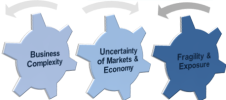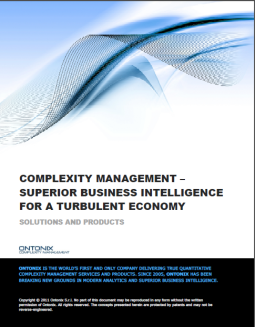Low probability: HIGH impact events
Wednesday, 22 December, 2010 Leave a comment
 If you think I am exaggerating the risks then PLEASE do tell me but, first, you may want to give it some thought.
If you think I am exaggerating the risks then PLEASE do tell me but, first, you may want to give it some thought.
A few years ago, “disasters” – whether natural or man-made – that involved a large number of fatalities, affected whole countries (or regions) were, to many, just news items to view at dinner time or discuss over a beer. They tended to happen to people unknown to you and so far away that perhaps the scale was lost on you.
Even the newsreaders only change their tone and put on the “sad faces” if ”…among the victims were (?) Britons”. I wouldn’t necessarily say that Live Aid changed things but it certainly helped “prick the social conscience”.
We (in UK) should consider ourselves fortunate that we have not DIRECTLY suffered as a result of tsunamis – volcanoes – earthquakes – droughts. Hungary HAD a proud track record of zero toxic sludge, The Gulf of Mexico for oil spills that last for weeks and Chernobyl for explosions! These and other events, such as the virtual collapse of global banking, Somalian Pirates, Terrorist attacks, flu pandemics and striking Chinese workers may not be happening on your doorstep…I wouldn’t want to live on that street(!)…but the point is that the inter-connectedness that brings global trading and opportunity has “baggage”.
Low probability: high impact events (Black Swans) can destroy the complex infrastructure of inter-connected systems and networks that have taken years to build. Systemic risk has the ability to hit, almost, without warning and to gather in momentum as it attacks the least robust and resilient enterprises.
Past experience of events helps us assess, mitigate, manage, price, aspects of risk but we have insufficient data to assess and quantify the probability of losses arising out of systemic risk…
A model-free Complexity analysis from Ontonix is the first step toward protecting against systemic risk. Our unique technology extends the risk horizon beyond that of conventional risk management techniques.
Related articles











